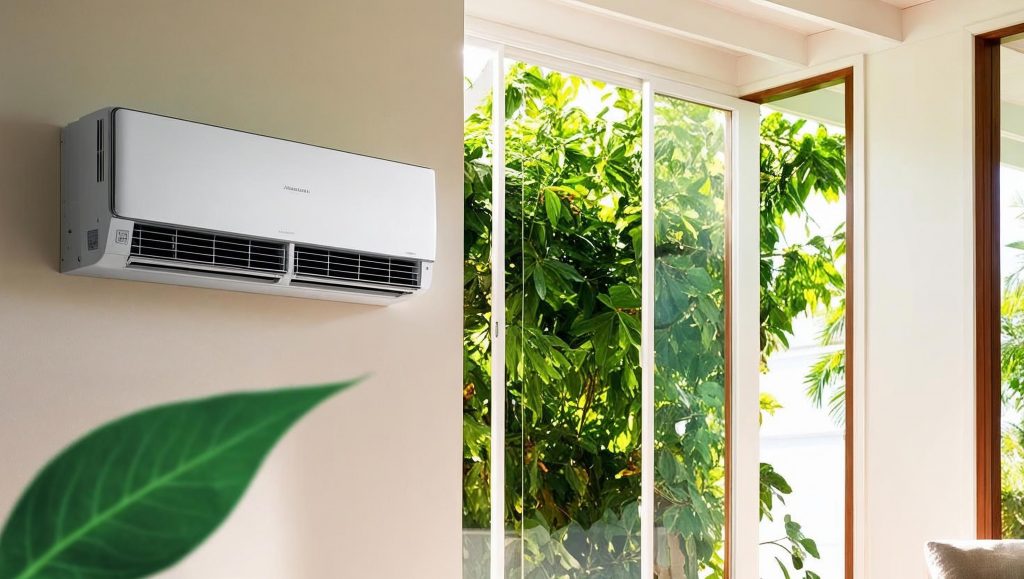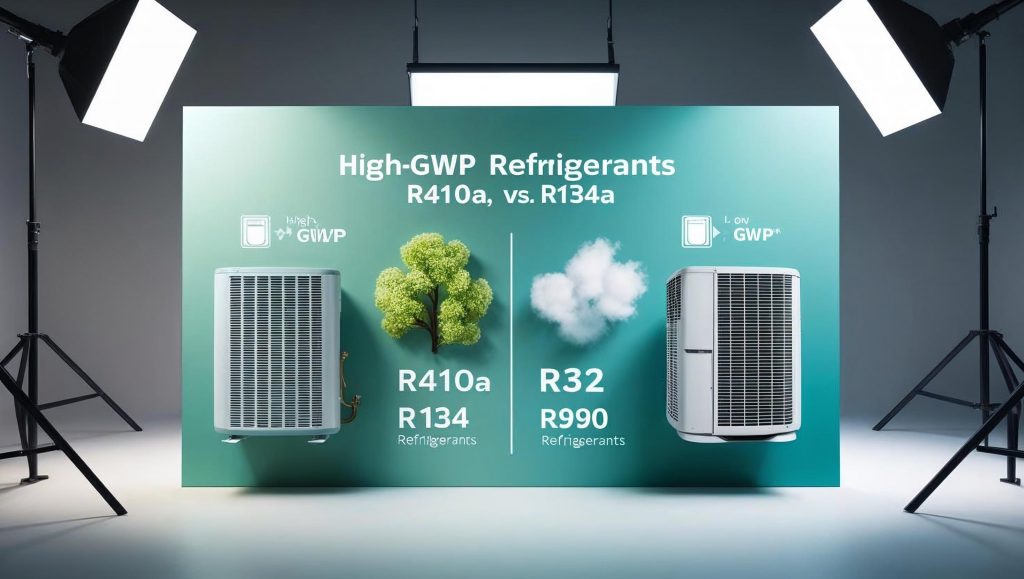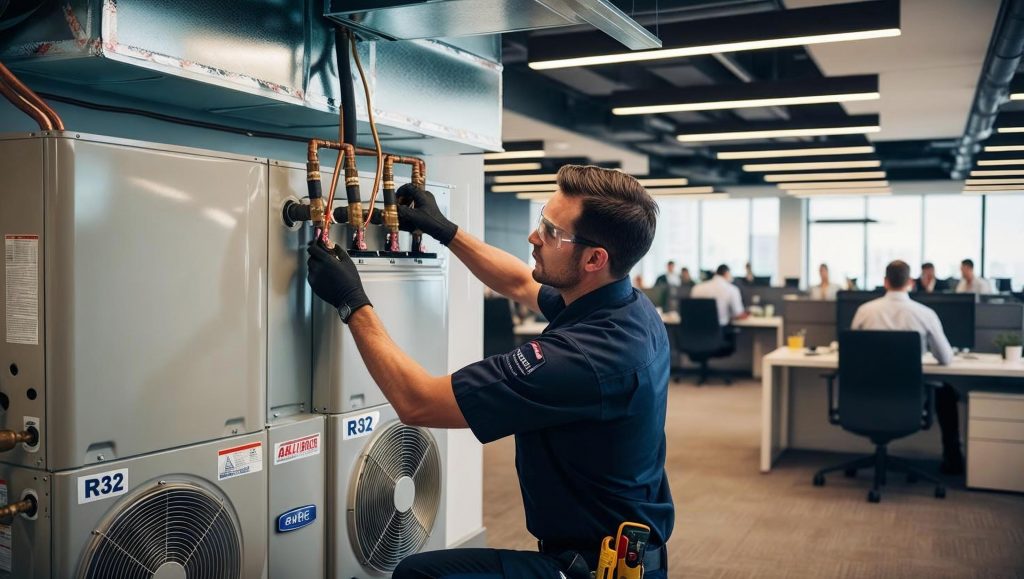Starting 1 July 2025, Australia will implement groundbreaking regulations to curb greenhouse gas emissions by banning the import and manufacture of multi-head split system air conditioning equipment using refrigerants with a Global Warming Potential (GWP) over 750. This move, part of the Ozone Protection and Synthetic Greenhouse Gas Management Regulations 1995, aims to reduce the environmental impact of air conditioning systems and align with global climate goals. Here’s what you need to know about this change and how it affects homeowners, businesses, and the planet.
Why Are These Regulations Being Introduced?
Air conditioning systems, while essential for comfort, contribute significantly to greenhouse gas emissions through high-GWP refrigerants like R410A (GWP 2,088) and R134a (GWP 1,430). These refrigerants trap heat in the atmosphere, accelerating climate change. The new regulations target multi-head split systems—popular in homes and offices—to phase out harmful refrigerants and promote eco-friendly alternatives like R32 (GWP 675) and R290 (GWP < 5).
This follows a similar ban introduced on 1 July 2024, which restricted small air conditioning units (e.g., portable and window/wall units) with high-GWP refrigerants. The 2025 ban extends these efforts, focusing on larger multi-head systems, including variable refrigerant flow (VRF) units, to further reduce Australia’s carbon footprint. Learn more about the legislation: https://www.dcceew.gov.au/environment/protection/ozone/legislation

What Does the Ban Mean for Australians?
The ban applies to the import and manufacture of multi-head split system air conditioners using refrigerants with a GWP over 750, effective from 1 July 2025. Here’s a breakdown of its impact:
- Homeowners: If you’re planning to install a multi-head split system after July 2025, you’ll need to choose models using low-GWP refrigerants. Existing systems are unaffected, but upgrading to eco-friendly units can save on energy costs.
- Businesses: Commercial properties relying on VRF systems must transition to compliant equipment. This may involve consulting with HVAC experts to ensure compliance and efficiency.
- Manufacturers and Importers: Equipment import licence (EQPL) holders can no longer import non-compliant systems, even if they’re refrigerant-free. Licences may be granted in limited circumstances, but the focus is on low-GWP alternatives.

Equipment manufactured or imported before the deadline can still be sold, providing a transition period for suppliers and consumers.
Which Systems Are Affected?
The regulations specifically target:
- Outdoor units for multi-head split air conditioning systems.
- Variable refrigerant flow (VRF) systems designed for stationary spaces (e.g., homes, offices).
- Systems using refrigerants with a GWP exceeding 750, such as R410A and R134a.
Exemptions include mobile applications (e.g., caravans, boats) and ducted systems, which are not covered by this ban.
Benefits of the New Regulations
Switching to low-GWP refrigerants offers multiple advantages for Australia’s environment and economy:
- Reduced Greenhouse Gas Emissions: Low-GWP refrigerants like R32 and R290 have a significantly lower impact on global warming, helping Australia meet its climate targets.
- Energy Efficiency: Newer systems are designed to be more energy-efficient, reducing electricity bills for households and businesses.
- Global Leadership: By aligning with international agreements like the Kigali Amendment to the Montreal Protocol, Australia reinforces its commitment to sustainability.
- Healthier Planet: Lower emissions contribute to cleaner air and a more stable climate, benefiting future generations.

How to Prepare for the Change
Whether you’re a homeowner, business owner, or HVAC professional, here are practical steps to stay ahead:
- Check Your System: Identify the refrigerant used in your current air conditioner (check the compliance plate or manual). If it’s R410A or R134a, consider upgrading to a compliant model.
- Consult Experts: Work with trusted HVAC providers like Elyment Group (https://elyment.com.au/) to assess your needs and explore low-GWP options.
- Plan Ahead: If you’re installing a new system, opt for models using R32 or R290 to future-proof your investment.
- Stay Informed: Follow updates from the Department of Climate Change, Energy, the Environment and Water (DCCEEW) for the latest on regulations and exemptions.
For personalised guidance, reach out to @ElymentGroup on X (https://www.facebook.com/ElymentGroup) or visit https://elyment.com.au/.
Key Takeaways
- New regulations effective 1 July 2025 will ban multi-head split system air conditioners using refrigerants with a GWP over 750.
- The ban aims to reduce greenhouse gas emissions and promote eco-friendly refrigerants like R32 and R290.
- Homeowners and businesses should upgrade to compliant systems to ensure compliance and energy savings.
- Existing equipment is unaffected, but planning ahead can future-proof your investment.
By embracing these changes, Australians can contribute to a greener future while enjoying the benefits of efficient, sustainable cooling solutions. For more insights on eco-friendly HVAC systems, follow @ElymentGroup on X or visit https://elyment.com.au/.
